arquitectura-G designs its costa house as a porch around a garden in barcelona
fresh, outdoor living in barcelona
Catalan design practice Arquitectura-G resolves a narrow, closed-off plot to create its breezy and light-filled Costa House. Located in Barcelona, the site is enclosed by party walls on both sides — a condition common throughout the Spanish city and among urban areas on the whole, but generally limiting to architects.
Responding to its urban context while aiming toward an open, airy living space, the house is designed as an L-shaped porch which opens onto an open-air courtyard.
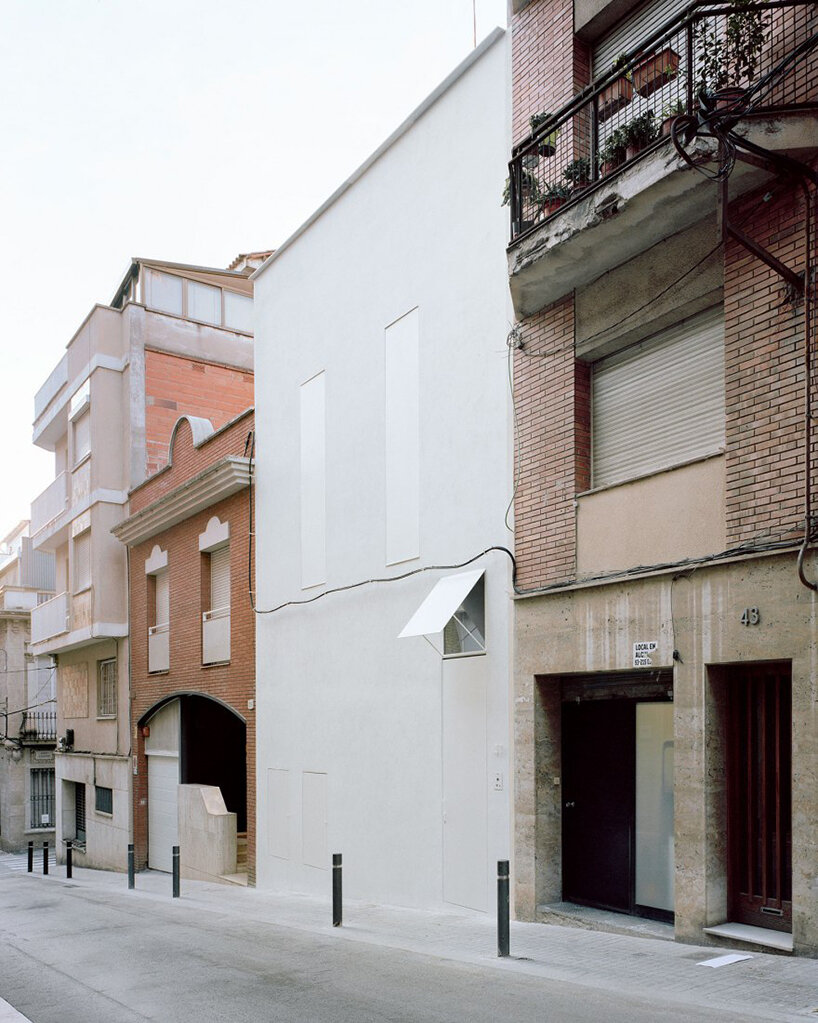 images © Maxime Delvaux | @maxdelv
images © Maxime Delvaux | @maxdelv
costa house: the porch around the courtyard
Arquitectura-G (see more here) describes the facade of its Costa House as ‘one more wall that encloses an interior space that wants to be exterior.’ The design team recognizes the value of outdoor space, especially to those living in a cosmopolitain context. With this in mind, the three-story house is organized to open broadly into itself — the courtyard becomes a sunny, garden atrium. the living spaces of the house peer into this garden as if they were each a front-porch, receiving fresh breezes and natural sunlight filtered by a canopy of trees.
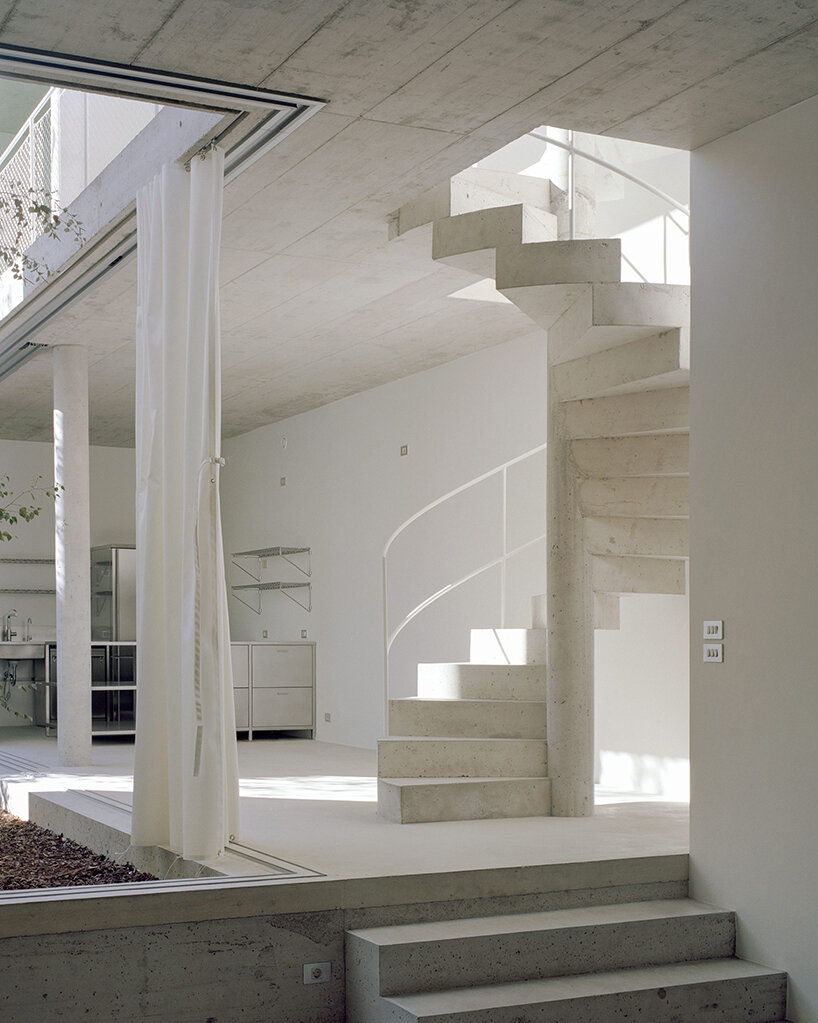
a hybrid space by arquitectura-g
Arquitectura-G curates the interiors of its Costa House to blend the picturesque, overgrown garden with the clarity and rawness of minimalistic design. The boundary between these two spaces is defined, but softened — without strict partitions and windows, the living spaces instead open with net railings and breezy white curtains. Thus, the occupant might easily transform each room to become more or less enclosed.
The house’s austere materials and blank finishes are enlivened by the natural daylight filtering through the trees, which floods the interiors with pattered shadows.
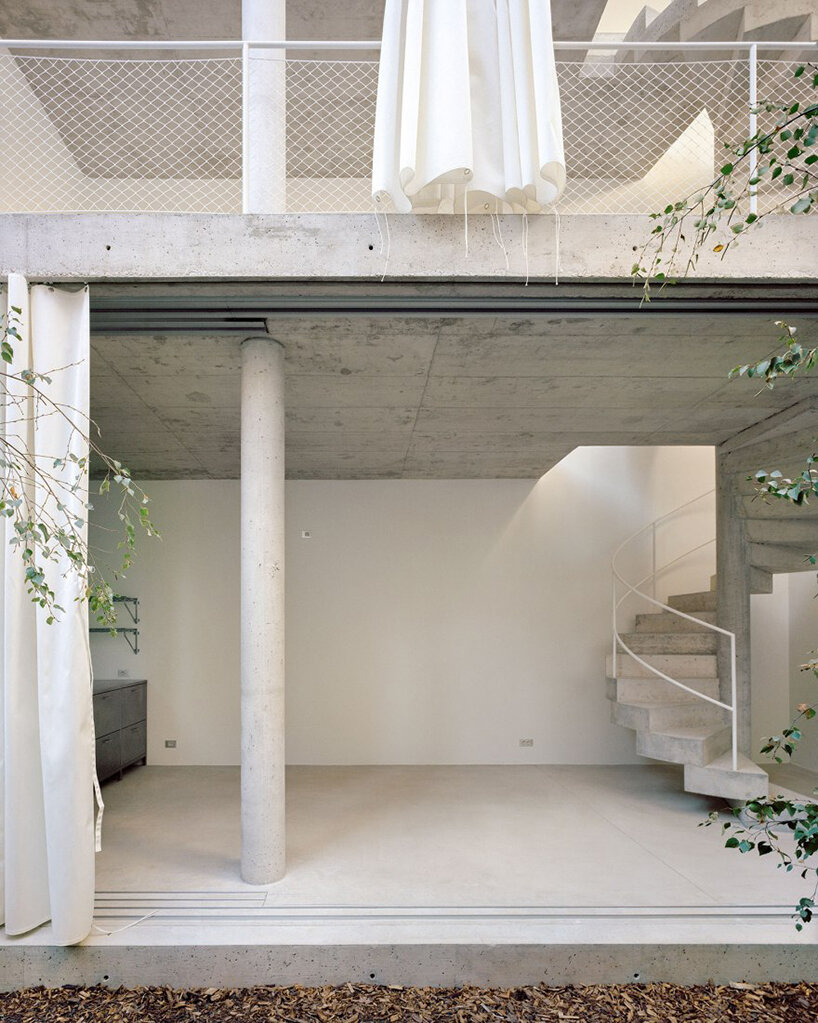
the boundary between the atrium and interiors is softened with net railings and breezy white curtains
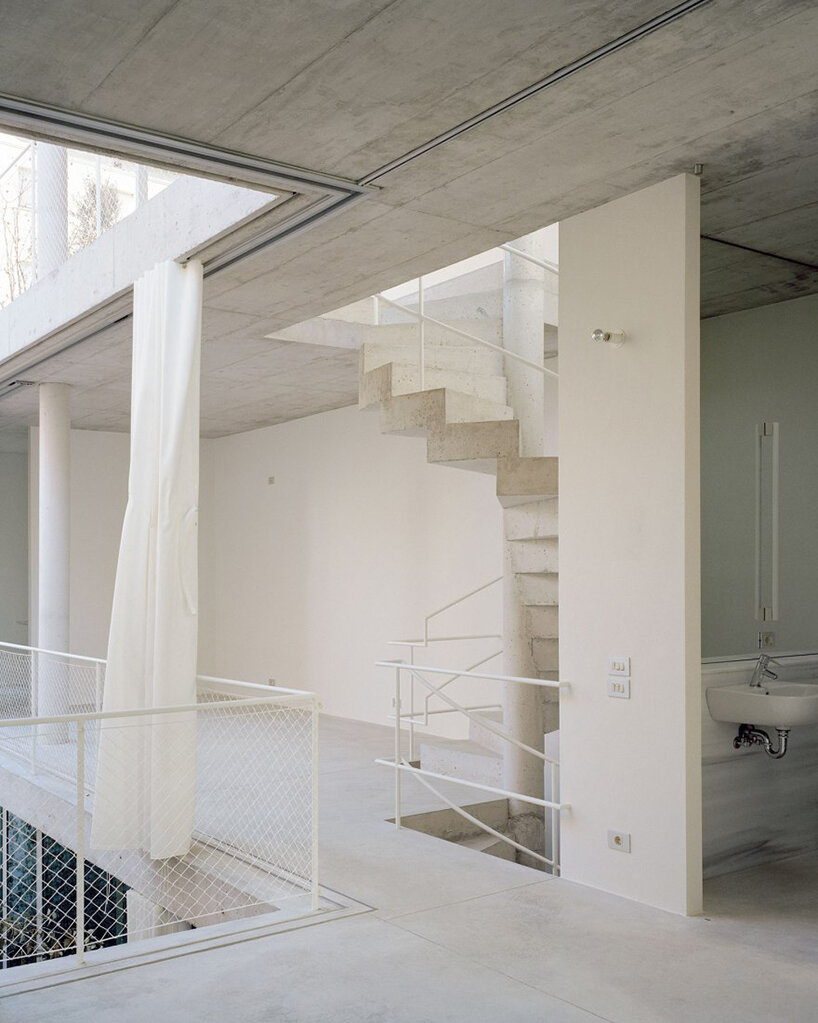
Arquitectura-G curates the interiors with austere materials and blank finishes
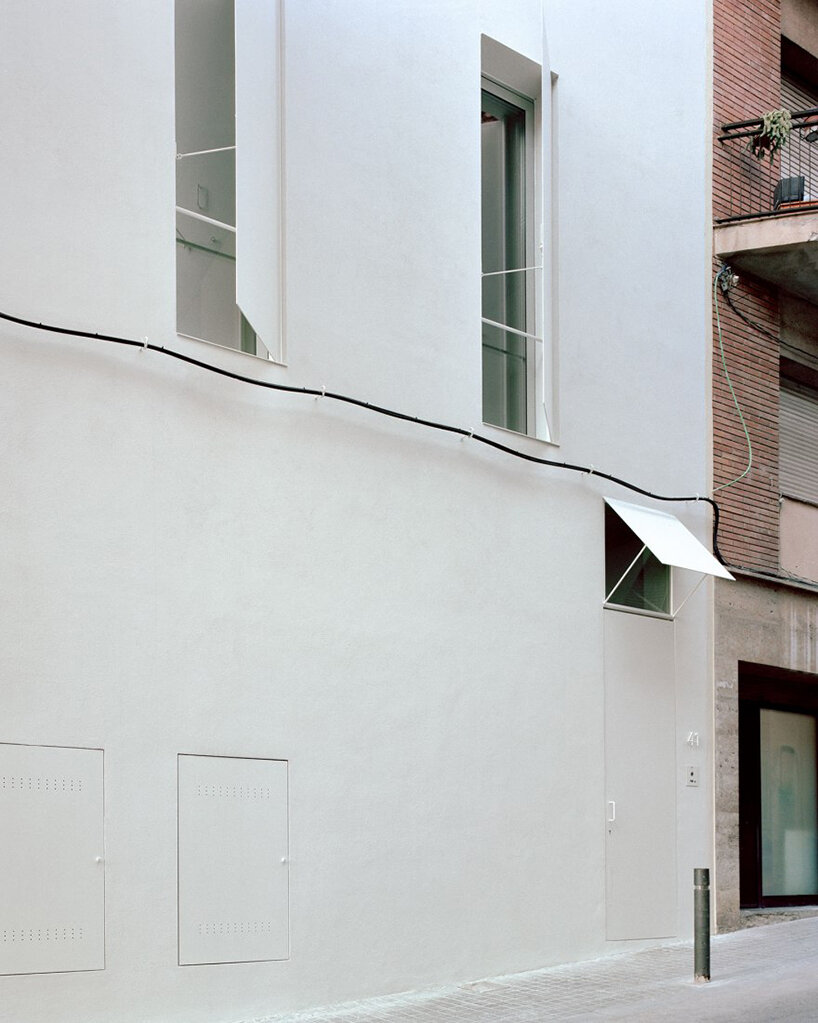 the facade is described as ‘one more wall that encloses an interior space that wants to be exterior.’
the facade is described as ‘one more wall that encloses an interior space that wants to be exterior.’

